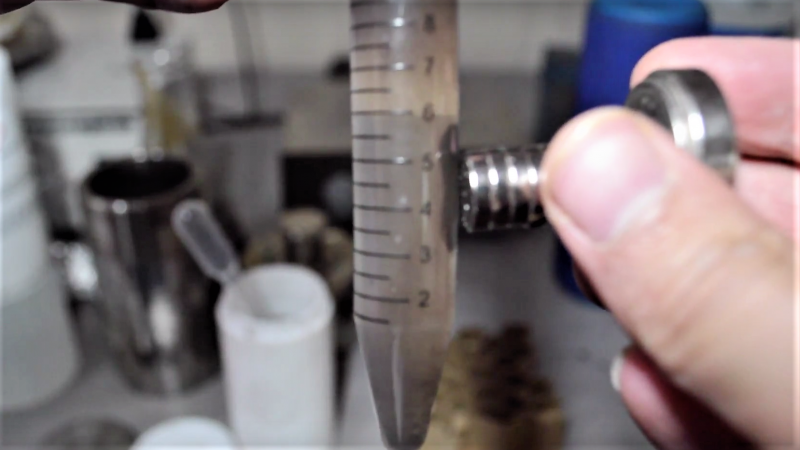When you consider that almost every single cell in your body has more than a meter of DNA coiled up inside its nucleus, it seems like it should be pretty easy to get some to study. But with all the other cellular gunk in a crude preparation, DNA can be quite hard to isolate. That’s where this cheap and easy magnetic DNA separation method comes in. If it can be optimized and tested with some help from the citizen science community.
Commercial DNA separation methods generally involve mixing silica beads into crude cell fractions; the DNA preferentially binds to the silica, making it possible to mechanically separate it from the rest of the cellular junk. But rather than using a centrifuge to isolate the DNA, [Justin] from The Thought Emporium figured that magnets might do a better job. It’s not a new idea — biotech companies offer magnetic separation beads commercially, but at too steep a price for [Justin]’s budget. His hack comes from making magnetite particles from common iron compounds like PCB etchant and moss killer, and household ammonia cleaner. The magnetite particles are then coated with sodium silicate solution, also known as waterglass. The silica coating should allow the beads to bind to DNA, with the magnetic core taking care of separation.
[Justin] was in the process of testing his method when he lost access to the needed instruments, so he’s appealing to the larger science community for help optimizing his technique. Based on his track record of success in fields ranging from satellite tracking to graphene production, we’ll bet he’ll nail this one too.
















Ferrite ceramic particles.. potentially you might be able to make these from laser toner + fine silica sand?
.. but don’t breath in either of those starting materials, you wont enjoy the results.
Laser toner is very fine soot (>99% carbon, rest is various hydrocarbons) and a binder, either thermoset or thermoplastic polymer. Silica sand significantly varies in iron content, but usually it’s not anything to write home about…Probably needs an additional source of iron?
Few tips from a professional scientist working with magnetic particles:
1) Using that method will give you particles of varying sizes which will later throw a wrench in separation times; you can control the dispersivity of them by adding in a surfactant to the Ferric salt solution
2) You might not need to Silanize your particles; Magnetite has hydroxyl groups when in water that works similarly to silane groups binding DNA (there’s a paper on this, but I don’t have the link handy)
3) Catechol groups bind to the surface of magnetite quite efficiently; Dopamine is a catechol with a free terminal amine group that can likely be manipulated with pH
4) The MSDS and Protocols from dna purification kits can be a goldmine of info; won’t give you concentrations but will tell you what salts they’re using. OpenWetWare also has some protocols with plain silica extractions using a centrifuge that could be handy
That is a way how pros do it. This part do exactly that.
http://www.ebay.com/itm/172822246997?ssPageName=STRK:MESELX:IT&_trksid=p3984.m1555.l2649